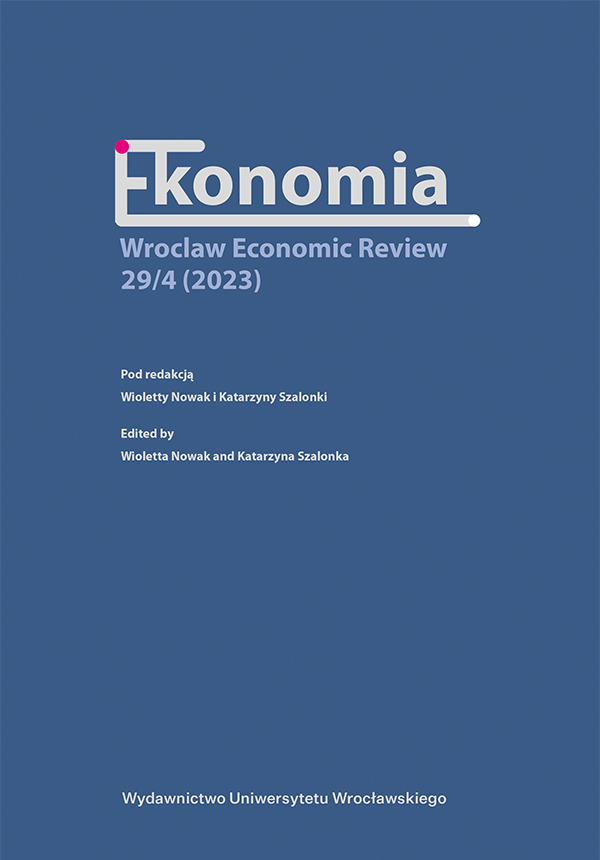

Artykuły

The COVID-19 pandemic has caused significant changes in the lifestyles of all social groups. As a result of the subsequent restrictions resulting from the epidemic threat, all areas of both professional and private life had to be modified. Students were a social group whose lifestyle changes were particularly visible. For most of this period, universities conducted classes remotely, using Internet platforms. Therefore, it was necessary to make changes in the current way of life, often associated with a change of place of residence, modification of the way of spending free time and current habits. A significant part of these changes may be permanent and remain after the end of the pandemic state or threat.
The aim of the paper is to analyze the changes in the lifestyle of Polish students in the light of our own surveys addressed to them. The students’ opinions on the changes in the way of acquiring and testing knowledge, in relations with the university and peers, and in the process of communicating with them will be presented and critically assessed. Changes in the process of nutrition, healthcare, including the length of sleep and physical activity, and the pursuit of one’s own interests will also be taken into account. The conclusions of the research will be confronted with the results of other studies and analyses devoted to various problems of lifestyle changes under the influence of COVID-19.
Ansbacher, H.L. (1967). Life style: A historical and systematic review. Journal of Individual Psychology, 23(2), 191–212.
Barbisch, D., Koenig, K.L., Shih, F.-Y. (2015). Is there a case for quarantine? Perspectives from SARS to Ebola. Disaster Medicine and Public Health Preparedness, 9(5), 547–553.
Benefit Systems. (2020). Raport Multi Sport Index 2020: Aktywność fizyczna Polaków wymaga wsparcia. Retrieved June 18, 2023, from https://biuroprasowe.benefitsystems.pl/137771-raport-multisport-index-2020-aktywnosc-fizyczna-polakow-wymaga-wsparcia.
Brivio, F., Viganò, A., Paterna, A., Palena, N., Greco, A. (2023). Narrative review and analysis of the use of “lifestyle” in health psychology. International Journal of Environmental Research and Public Health, 20(5), 4427.
Fatyga, B. (2012). Rzeczy i ich miejsce w konsumpcyjnym stylu życia. Antropologia Współczesności. Warszawa: Instytut Stosowanych Nauk Społecznych, Uniwersytet Warszawski.
Hansel, T.C., Saltzman, L.Y., Melton, P.A., Clark, T.L., Bordnick, P.S. (2022). COVID-19 behavioral health and quality of life. Scientific Reports, 12(1), 961.
Jensen, M. (2009). Lifestyle: Suggesting mechanisms and a definition from a cognitive science perspective. Environment, Development and Sustainability, 11(1), 215–228.
Olearczyk, A., Walewska-Zielecka, B. (2021). Wpływ pandemii COVID-19 na wybrane obszary zdrowia, stylu życia i samopoczucia pracowników w Polsce. In W. Nowak and K. Szalonka (eds.), Zdrowie i style życia. Ekonomiczne, społeczne i zdrowotne skutki pandemii (59–68). Wrocław: E-Wydawnictwo. Prawnicza i Ekonomiczna Biblioteka Cyfrowa. Wydział Prawa, Administracji i Ekonomii Uniwersytetu Wrocławskiego.
Siciński, A. (2002). Styl życia, kultura, wybór. Szkice. Warszawa: IFiS PAN.
Szemik, S., Gajda, M., Gładyś, A., Kowalska, M. (2022). The association between COVID-19 pandemic and the quality of life of medical students in Silesian voivodeship, Poland. International Journal of Environmental Research and Public Health, 19(19), 11888.
Tyagi, P., Pabalkar, V. (2021). Impact of COVID-19 over purchasing behaviour of the consumers. European Journal of Molecular & Clinical Medicine, 8(2), 561–571.
van der Werf, E., Busch, M., Jong, M., Hoenders, R. (2021). Lifestyle changes during the first wave of the COVID-19 pandemic: A cross-sectional survey in the Netherlands. BMC Public Health, 21(1), 1226.
Zemrani, B., Gehri, M., Masserey, E., Knob, C., Pellaton, R. (2021). A hidden side of the COVID-19 pandemic in children: The double burden of undernutrition and overnutrition. International Journal for Equity in Health, 20(1), 44.